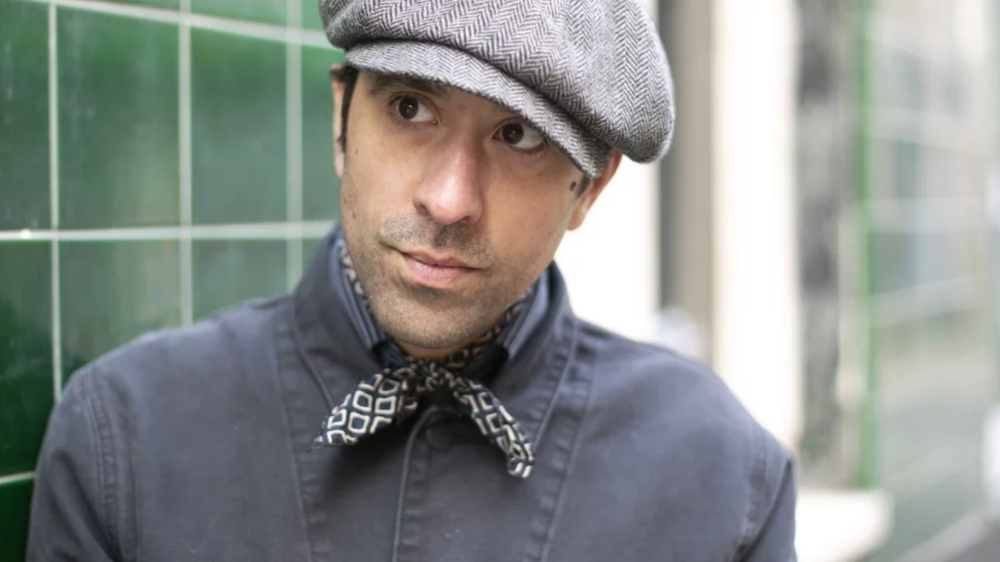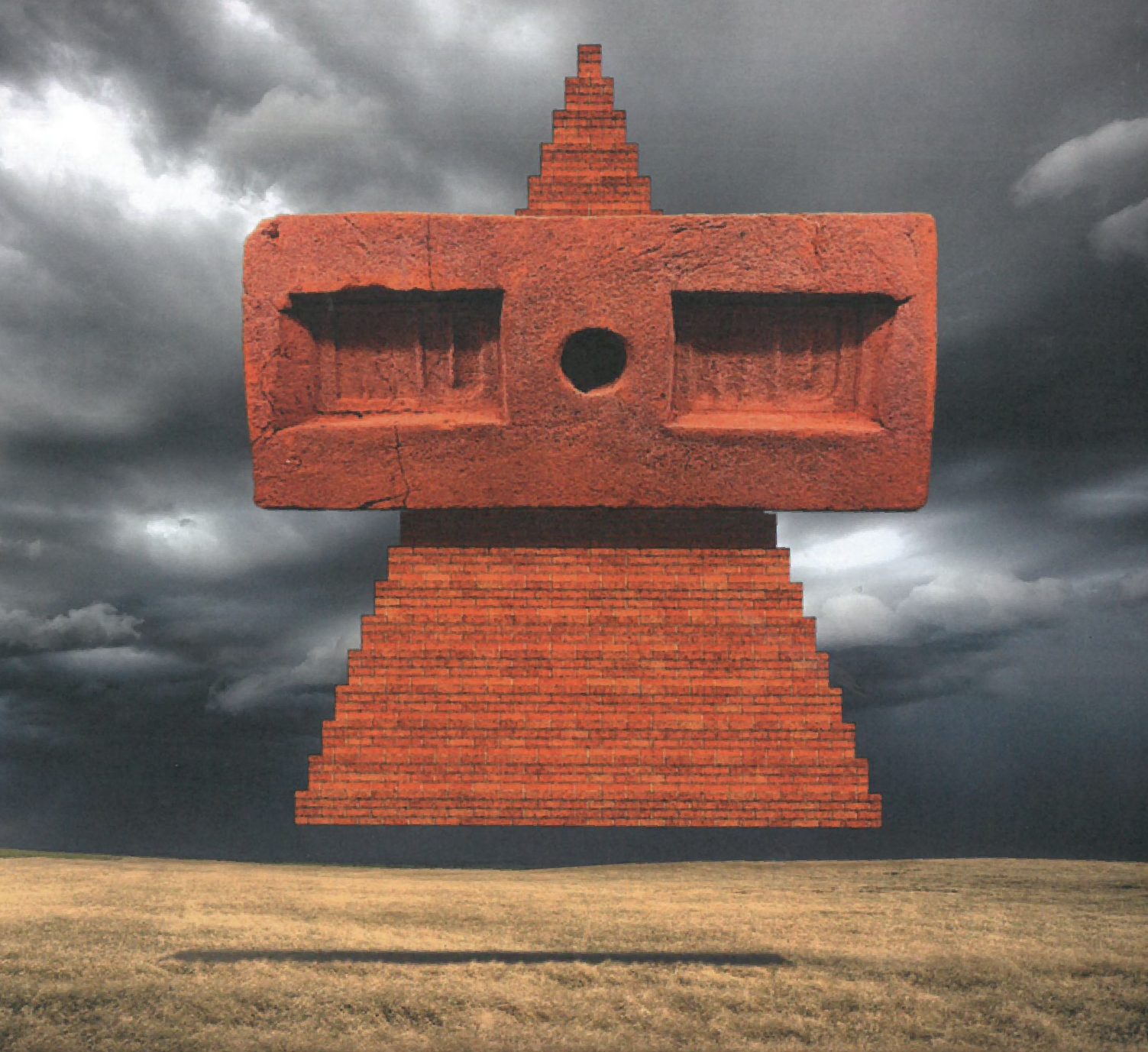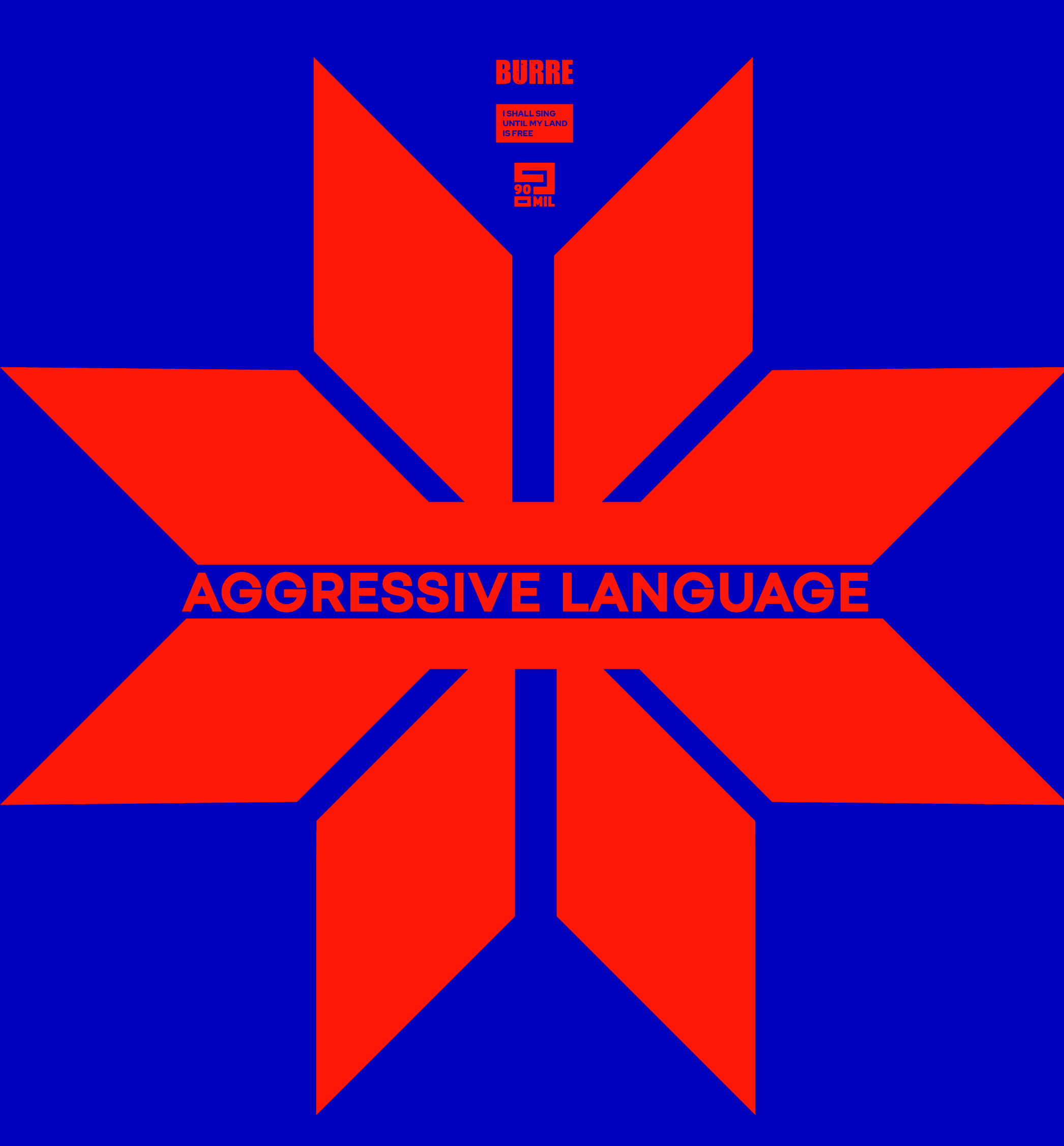Following your art and heart: In conversation with Tristan da Cunha

When you talk about Leeds nightlife, you can’t not mention Back to Basics. A mainstay on the northern city’s clubbing circuit since 1991, it’s seen a host of DJs come up through the ranks. One such man is Tristan da Cunha. Over the years he’s become a regular fixture at Glastonbury’s Block 9 and NYC Downlow, makes up part of the My Love Is Underground crew, and alongside alliance Brawther, as Dungeon Meat, he gave us ‘The F**K Off Track’, that 2013 clubland classic that you couldn’t tell your mum about.
It’s feats like these that have earned him the respect and trust of his musical peers. At the first edition of Houghton, Tristan was the most scheduled artist to play across the weekend, a decision that Craig Richards made as “he wanted him to shine.” It’s not surprising why when you talk to him. He has an unrivalled fervour for the industry that he’s been part of for more than 20 years, and there’s no signs of that letting up anytime soon.
In this interview we explore his roots and evolution as a DJ, why NYC Downlow is his favourite place on earth and how the northern love to party.
Where is home?
Leeds, I’m Yorkshire born and bred. I have a nice following in London but I believe it’s good for me not to live there. Away from it, there’s freedom in what to do, no rat race, more headspace to do your own thing and actually reasonable cost of living for an artist to survive and thrive.
When did you start collecting records?
Mid 90s, when I began clubbing. I began searching for similar sounds I’d hear on the weekend in places like Eastern Bloc, Barking records, HMV, Crash Records. I was deep-digging through mixtapes and all – I’ve got around 15-20,000. I co-owned two record shops over the years. The second being Waxwerks in The Garage – a club, store and DJ Booth based inside an old chevy firetruck. It was a legendary space that closed down after 18 months. It won best small club after nine months of being open and Fabric won the biggest club same year via DJ mag. It left a big hole in Leeds and I haven’t jumped into anything since that. Now I’m just focusing on making and playing music rather than selling it.
Has DJing always been the goal?
First and foremost I came from the dancefloor. Back to Basics was so cutting edge, it turned me on to multiple sounds, starting the journey and passion for the music I love today. I looked up at the DJ booth and thought “It must be fun to do that.”
From there it found me, I was in the right place at the right time with the right people. I was hanging around the record shops, curating mixtapes, vibrating on the right frequency with the right attitude. I began A&R for 2020 Vision, one of the biggest electronic record labels in the UK at the time. It’s seen the likes of Crazy P, Random Factor, Paul Woolford and MCDE release on it. Ralph Lawson is the man behind it and a resident at B2B also. He took me under his wing and at the age of 20, I found my path early, having three jobs going as a resident DJ at Basics, A&R scout for 2020 and running my record shop called Playmusic with a couple other friends.
What was going on in the mid 90s for you?
I was about 15/16 years old discovering a whole new world and finding myself along the way. It was a fertile time culturally, music was abundant and super fresh. There was great stuff coming out the UK and America as well as all over Europe, you were spoilt for choice. It was post-Hacienda off the back of the acid house wave. Back to Basics was born, things got more refined and safer in clubs and people were sick of looking scruffy and baggy. It felt more free, the crowds were varied; different ethnicities, it was gay, it was straight, it was really exciting. Now, I don’t see as much of that mixed together on the dance floor.
What’s so charming yet hardcore about you northern folk that keep it going strong to this day?
The northern love to party as many people know! Especially Leeds. It was the first place to publish a curfew till 6am. The mayor couldn’t see any reason as to why not so gave it the green light. This late licensing became an attraction, it’s seen the likes of Derrick Carter, DJ Sneak, Chez Damier, Danny Tenaglia, Goldie, Daft Punk, even Jamie Jones before he hit superstar status. Now Basics holds just one off parties. After that I started my own thing though as I wasn’t playing so much in Leeds. Starting my own small gathering meant there was more freedom for booking my own personal taste and no pressure to sell tickets as cutting edge doesn’t always correlate with making profit.

What sparked your strong relationship with Brawther and MLIU? How did forming both your record label Dungeon Meat come about?
The short story is I heard an amazing record by Brawther and got in touch with the label. After that, we met at a party him and Jeremy Underground threw at CAMP in London which is now closed. We realised our love for the same music and it grew organically from there. We then booked Brawther and Jeremy for a Back to Basics night which was off the chain and from there began the family affair. Nothing but love and respect for those boys. With regards to the label, Brawther and I wanted an outlet for our own take on house music. We became obsessed with this certain style which we called Dungeon Meat; dungeony sounds and meaty beats. It was a no brainer really, having our own platform for the music meant we could have full control and present it exactly how we wanted it to be. Making it look how it sounded was also very important for us. The label was an instant success and was very well received.
How did The Fuck Off Track come about?
Go back to Brawther’s bedroom in Leeds in 2012. MLIU popularised the 90s sound but we were getting sick of all the people rinsing the formula, making plastic manufactured plug-in versions. Every track was sounding the same that it was hard to differentiate the good from the bad because there’s just so much shit out there.
Anyway, when we were making the track we were like, “Fuck offffffff” – in a good way. It had this F Off vibe and it worked in our favour. We called it the Fuck off track as a working title but it just stuck. It was funny when people were coming up to the DJ booth saying, “the what track?” After one session we had created the sound; it was raw, punchy, it took away the flowers and had super-sonic powers. No messing.
We would probably still be perfecting the track if it wasn’t for the Slapfunk crew and Jeremy playing it and then signing it to MLIU. At the time we felt it was unfinished but the guys disagreed and it went on to be one of the biggest tracks of the year.
Did you play different roles in the production?
Yeah on this track we both worked on the beats and structure. I played the bass line and Brawther was doing the wispy white noise business on the Juno 106. Which in fact after making it chug and speed up, we realised sounded like one was masturbating with the synth or a train noise. We were laughing our heads off creating the breakdown and the drop. It was a LOT of fun making the track and I think that reflects in the outcome. Together we have a vast taste in music and for us the best things come around when we are just letting it flow and having fun.
Who was the Dungeon gnome on the record cover?
This was the springboard launch for Dungeon Meat’s sound; a style and attitude that was more than just a label. The little gnome as you call him was actually the executioner, an in direct ode to underground resistance. He was going to slay all the mediocre, copycat, cookie cutter house music around at the time.
Do you always use hardware to produce?
I’m no hardware nazi like some people. It's whatever suits, I use both. I do gravitate to hardware to get my initial ideas flowing though. My approach is marry both software and hardware as there’s mindbending stuff to be done on each. I use Ableton and Logic and then have a collection of hardware that I cherish. People don't really give a shit as long as it sounds good and the ideas are interesting. If it bangs it bangs. No one is there on the dance floor stroking their chin trying to analyse if its analogue or digital and even if they are they need to get off the dance floor because they certainly ain’t dancing.
What is the new Hearlucinate project and who designed the mind expanding man artwork for it?
I started it at a cool spot in Leeds called Distrikt as a party where I could choose who I have to play and curate something very personal. The killer artwork is done by a guy called Guillaume de Ubeda from Atelier Superplus. We did a series of limited edition posters which look amazing. He’s super talented and I’m so happy to work with creative minds like him. For me, there needs to be a visual aspect to everything I do to convey my message – a strong identity is a must, first impressions always count. I like concepts and stories behind the music and for me art and music go hand in hand.
Now I’ve decided to take Hearlucinate further and do parties in other places. The first one is this Friday at one of my favourite places The Lion and Lamb in London . For the party I’ve booked an amazing producer and DJ called Dawl who is part of Tone Dropout, a killer label who I've supported from the beginning. I’ve also decided to start a label for the night as well and press up records especially for the party. The concept is whoever plays at the party does a split record with myself as the resident. The first one has two tracks from Dawl, a track from me and another from Freakenstein which is a new project of mine. It features all the nice artwork from the party and looks and sounds awesome. I’m really proud of it and can’t wait to present what else I have for the future releases.

‘Sweaty, dungeon, meaty music made for night time’ – would you agree with this statement? Are you a midnight man?
I’m definitely a creature of the night yes. I come with energy in my music, it’s got to make me move and feel good. Even if that’s feeling a little nasty and dirty, that also makes me feel good. Energy that doesn’t take too much thinking about, your body just moves to it impulsively. If you get too much into the head it takes away the soul. It’s trying to find a nice balance of playing with people’s minds but ultimately moving their behinds. The wetter the better as George Clinton once said. Sweat is obligatory I'm afraid.
Heart over charts – Have you ever had to sacrifice yourself on the dancefloor musically for what you stand for?
I never pander to the crowd. Some crowds are more challenging, some want to hear the same old shit and some want their heads challenged and to get a bit more twisted, but you gauge how people react to certain pieces of music. The DJ sixth sense tells you whether to shift it up or down a gear or take a left or right turn. I’m never selfish though, I always want people to walk away having had a good time. It’s a party at the end of the day.
How do you warm up before a set? Align your chakras or anything?
My preparation is organisation mentally, musically and physically. I ask myself “how am I going to pitch it? The beginning and the end.” In order to reach a certain altitude you need to pace it and ascend nicely, don’t dive straight up like a rocket. You need to be able to tell a bit of a story or as corny as it sounds take them on a journey. Making sure I have my favourite records in my bag and my USB stick organised are the main ways I prepare though. The rest comes in the moment with the connection between me and the dance floor.
Do you hope to convey some message in your music for people on the dance floor?
I want people to lose their minds, let go of inhibitions, dance and be together. Ultimately I want to elevate people. A dialogue between the dance floor and DJ booth is where the magic happens. When there’s a good conversation going on between the two then we can really have fun with it.
Your wackiest rave?
NYC downlow, it’s absolute BONKERS in there. A utopia of people being who they want to be, representing the colourful homo side to Glastonbury where others also come through and cross pollinate. My favourite place on the planet for five days, hands down. Musically, visually, socially, there’s nothing else like it.
They start from the music upwards and think, “what would be the most perfect environment to listen a NY disco record or techno record?” Some seedy club in a backstreet of the meatpacking district in NY or some futuristic alien looking setting. They’re very accomplished. They’ve done things for Lana Del Rey, Banksy, Skrillex, BBC etc. It really is NEXT level stuff. I’m so honoured to be a resident for them.
Their other stage the Genosys is an Oxygen Generating System, a futuristic lung of the Earth, where organic trees mix with industrial brutalism. It’s Disney World for techno and electro, it sweeps me off my feet every time I walk in the Block 9 field. A reminder of how we should be in day-to-day life; being ourselves and loving one another no matter how freaky we seem to each other.
Thoughts on mentorship?
I strongly recommend anyone getting into something creative or business to have at least one person who looks out for you, showing and telling you how it’s done and where to improve. Someone who can condense a lifetime worth of experience into a couple hours. I truly believe when the student is ready the teacher will appear. I have been doing a bit of teaching myself, showing kids at a school in Leeds how to sample everyday objects like pots and pans and how to record this and make something musical. For me I’m at that stage in my life where I feel I want to contribute more and give something back, nurturing the next generations and keeping our beloved art forms alive and kicking.
What would you say to those young in the game, wanting to stay true to themselves but also trying to make a living in the music world?
Following your art and heart is the road to happiness but not always the most secure or easiest road. However if you can put your head on the pillow at night and know your moving closer towards a goal then you’ll be heading in the right direction. It’s all about progress, however little that is. Be themselves, be inspired by people, take that inspiration and give it your own twist because at the end of the day that’s what people buy into. Something fresh from your perspective which can only be developed by being yourself. Music or art that’s honest is the best kind. Surround yourself with likeminded people as well, this is a huge factor to anyone’s success.
How do you fight the death of an artist?
The game has changed these days. It’s a mixture of playing the game but also being open to lots of different things. Don’t get stuck in a stylistic rut. If it’s about the music and the art then you’ll never stop doing it, whether in the public eye or not. Don’t try to be flavour of the month, instead aim for something classy and timeless. Don’t rush things out, take your time and make sure you always put your best foot forward. As an artist you’ve got to keep growing to keep glowing.
Any producers or DJs to look out for?
So many but off the top off my head: Sweely, Desert Sound Colony, Instinct, Gene On Earth, Ron Obvious, Pager crew, Dawl, A-Future, Corp, OCB, Kosh. Loads and loads.
Future plans?
A year to put out more music for sure under my own name and other guises, expanding on the whole Hearlucinate concept, fresh meat from the Dungeon and trying to express myself artistically in as many forms as possible. I’ve also gone back to college to perfect my skills and keep learning and honing my craft.
What do you think the future is for aging ravers?
You don’t stop raving because you get old, you get old because you stop raving.
Follow Tristan da Cunha and Dungeon Meat on Facebook.

















Must Reads
David Holmes – Humanity As An Act Of Resistance in three chapters
As a nation, the Irish have always had a profound relationship with the people of Palestine
Rotterdam – A City which Bounces Back
The Dutch city is in a state of constant revival
Going Remote.
Home swapping as a lifestyle choice
Trending track
Vels d’Èter
Glass Isle
Shop NowDreaming
Timothy Clerkin
Shop Now